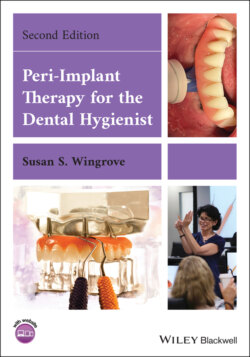Читать книгу Peri-Implant Therapy for the Dental Hygienist - Susan S. Wingrove - Страница 23
Summary
ОглавлениеThe 21st century is an important and critical time to be a hygienist! History has shown us that implants are not new and are definitely here to stay. An understanding of the evolution of implants, implant design, and the key terminology will allow you to talk to patients about the background of implantology. The relationship between periodontal health and diseases involving other organs and physiological systems (i.e., cardiovascular disease, preterm birth, diabetes, and respiratory disease) has been clearly documented (15–19). Hygienists need to be trained in the long‐term prevention of peri‐implant complications.
According to Dr. Nogueira‐Filho et al., writing in 2010 (1), “There is no reason to believe that mucosal inflammation affecting endosseous implant (i.e., peri‐implant mucosal inflammation) would have fewer effects on general health than similar levels of inflammation affecting teeth (i.e., periodontitis, gingivitis).” Therefore, it is imperative that hygienists are trained in identifying and treating peri‐implant mucosal inflammation that could affect overall body health. The explosion of dental implants over the next decade will change the way we practice dental hygiene.
